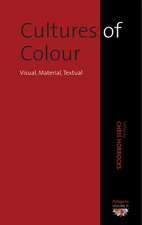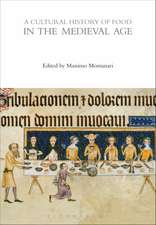Childbirth Across Cultures: Ideas and Practices of Pregnancy, Childbirth and the Postpartum: Science Across Cultures: The History of Non-Western Science, cartea 5
Pamela Kendall Stone Editat de Helaine Selinen Limba Engleză Paperback – 14 mar 2012
Labor and birth are biocultural events that are managed in countless ways. We are particularly interested in the notion of power. Who controls the pregnancy and the birth? Is it the hospital, the doctor, or the in-laws, and in which cultures does the mother have the control? These decisions, regarding place of birth, position, who receives the baby and even how the mother may or may not behave during the actual delivery, are all part of the different ways that birth is conducted.
One chapter of the book will be devoted to midwives and other birth attendants. There will also be chapters on the Evolution of Birth, on Women’s Birth Narratives, and on Child Spacing and Breastfeeding.
This book will bring together global research conducted by professional anthropologists, midwives and doctors who work closely with the individuals from the cultures they are writing about, offering a unique perspective direct from the cultural group.
| Toate formatele și edițiile | Preț | Express |
|---|---|---|
| Paperback (1) | 1381.88 lei 6-8 săpt. | |
| SPRINGER NETHERLANDS – 14 mar 2012 | 1381.88 lei 6-8 săpt. | |
| Hardback (1) | 1388.05 lei 6-8 săpt. | |
| SPRINGER NETHERLANDS – 16 oct 2009 | 1388.05 lei 6-8 săpt. |
Preț: 1381.88 lei
Preț vechi: 1685.23 lei
-18% Nou
Puncte Express: 2073
Preț estimativ în valută:
264.51€ • 287.41$ • 222.33£
264.51€ • 287.41$ • 222.33£
Carte tipărită la comandă
Livrare economică 21 aprilie-05 mai
Preluare comenzi: 021 569.72.76
Specificații
ISBN-13: 9789400730588
ISBN-10: 9400730586
Pagini: 332
Ilustrații: XVIII, 314 p. 33 illus. in color.
Dimensiuni: 155 x 235 x 22 mm
Greutate: 0.47 kg
Ediția:2009
Editura: SPRINGER NETHERLANDS
Colecția Springer
Seria Science Across Cultures: The History of Non-Western Science
Locul publicării:Dordrecht, Netherlands
ISBN-10: 9400730586
Pagini: 332
Ilustrații: XVIII, 314 p. 33 illus. in color.
Dimensiuni: 155 x 235 x 22 mm
Greutate: 0.47 kg
Ediția:2009
Editura: SPRINGER NETHERLANDS
Colecția Springer
Seria Science Across Cultures: The History of Non-Western Science
Locul publicării:Dordrecht, Netherlands
Public țintă
ResearchCuprins
Birth and the Big Bad Wolf: An Evolutionary Perspective1.- Breastfeeding and Child Spacing.- Culturally Diverse Women Giving Birth: Their Stories.- A History of Western Medicine, Labor, and Birth.- Childbirth in China.- Childbirth Among Hong Kong Chinese.- Childbirth in Korea.- Childbirth in Japan.- A Sacramental Theory of Childbirth in India.- Rural Midwives in South India: The Politics of Bodily Knowledge.- Constructions of Birth in Bangladesh.- Pregnancy and Childbirth in Nepal: Women’s Role and Decision-Making Power.- Pregnancy and Childbirth in Tibet: Knowledge, Perspectives, and Practices.- Nyob Nruab Hlis: Thirty Days Confinement in Hmong Culture.- Pregnancy, Childbirth and Traditional Beliefs and Practices in Chiang Mai, Northern Thailand.- Childbirth Experience in the Negev – The Southern Region of Israel.- Childbirth and Maternal Mortality in Morocco: The Role of Midwives.- Childbirth in Zimbabwe.- Childbirth in Nigeria.- Childbirth in Tanzania: Individual, Family, Community.- Culture, Pregnancy and Childbirth in Uganda: Surviving the Women’s Battle.- Childbirth Experiences in Malawi.- Navajo Birth: A Bridge Between the Past and the Future.- Childbirth in the Mayan Communities.- Converting Birth on Simbo, Western Solomon Islands.- Childbirth in Australia: Aboriginal and Torres Strait Islander Women.
Recenzii
From the reviews:
“Childbirth Across Cultures is a compilation of research about the experience of pregnancy and birth around the globe. … Reading this book was a pleasure. There are pictures of cultural practices … maps, charts, and other diagrams that enrich the reader’s experience. … This book would be excellent for faculty and residents in family medicine and OB-GYN as well as graduate students in nursing, anthropology, sociology, social work, and public health. Medical students and those studying global health will find this book interesting as well.” (Amy Ellwood and Katie Kolonic, Family Medicine, Vol. 43 (1), January, 2011)
“Childbirth Across Cultures is a compilation of research about the experience of pregnancy and birth around the globe. … Reading this book was a pleasure. There are pictures of cultural practices … maps, charts, and other diagrams that enrich the reader’s experience. … This book would be excellent for faculty and residents in family medicine and OB-GYN as well as graduate students in nursing, anthropology, sociology, social work, and public health. Medical students and those studying global health will find this book interesting as well.” (Amy Ellwood and Katie Kolonic, Family Medicine, Vol. 43 (1), January, 2011)
Textul de pe ultima copertă
Childbirth Across Cultures explores the childbirth process through globally diverse perspectives to offer a broader context with which to think about birth. It addresses multiple rituals and management models surrounding the labor and birth process from communities across the globe.
Labor and birth are biocultural events that are managed in countless ways. We are particularly interested in the notion of power. Who controls the pregnancy and the birth? Is it the hospital, the doctor, or the in-laws, and in which cultures does the mother have the control? These decisions, regarding place of birth, position, who receives the baby and even how the mother may or may not behave during the actual delivery are all part of the different ways that birth is handled.
The cultures included range from the Solomon Islands to Africa, Asia and the Americas. Other chapters cover Midwives and other Birth Attendants, Evolution of Birth, Women’s Birth Narratives, and Child Spacing and Breastfeeding.
This book will bring together global research conducted by professional anthropologists, midwives and doctors who work closely with the individuals from the cultures they are writing about, offering a unique perspective direct from the cultural group.
Labor and birth are biocultural events that are managed in countless ways. We are particularly interested in the notion of power. Who controls the pregnancy and the birth? Is it the hospital, the doctor, or the in-laws, and in which cultures does the mother have the control? These decisions, regarding place of birth, position, who receives the baby and even how the mother may or may not behave during the actual delivery are all part of the different ways that birth is handled.
The cultures included range from the Solomon Islands to Africa, Asia and the Americas. Other chapters cover Midwives and other Birth Attendants, Evolution of Birth, Women’s Birth Narratives, and Child Spacing and Breastfeeding.
This book will bring together global research conducted by professional anthropologists, midwives and doctors who work closely with the individuals from the cultures they are writing about, offering a unique perspective direct from the cultural group.
Caracteristici
This volume is unique in bringing together experiences of birth and pregnancy from more than 20 cultures around the world This volume brings a unifying theme: Power — who makes the decisions about birth and the conduct of the mother during labour? This volume shows how birth process is connected to the culture and illustrates why birth is a biocultural event This volume illustrates the many ways it is possible to give birth, so that parents can realize that the biomedical model is not the only one































